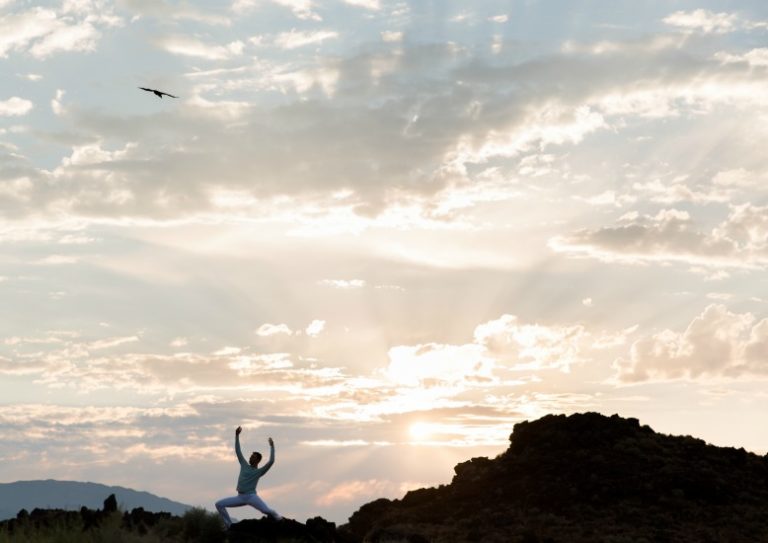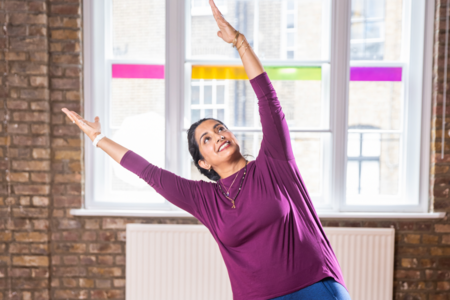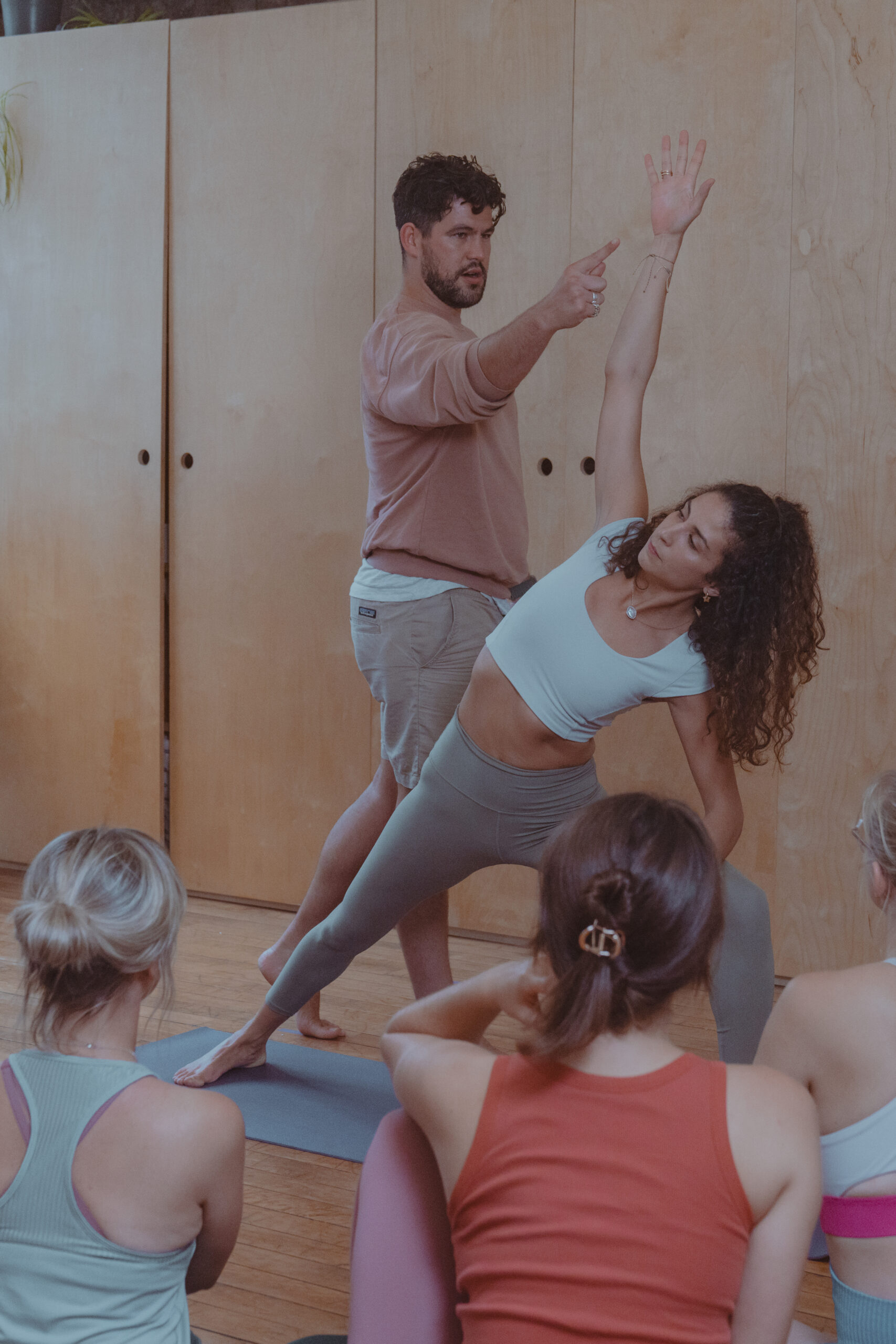Dr. Scott Lyons shares a Somatic Stress Release™ practice that helps to reduce compound stress by clarifying the present moment. This seven-step process helps to deconstruct the past and re-shape your current reality. It feels like modern-day alchemy in action and it is well worth a try.
Stress is comprised of two components: a stressor (the stimulus) and stress response (the biological mobilization of energy to adapt and respond to the stimulus).
In spite of its reputation, stress in and of itself is not inherently good or bad. The challenge of stress lies in how we perceive stress (and stressors) and any inability to mobilize the energy that is activated in response to a stressor. Ultimately, it is our capacity to mobilize energy and find true restoration that determines our health and well-being. When our internal and external resources are challenged or strained beyond our means, we may get chronic stress (distress) with physiological responses such as:
– Suppression of the immune system (and the associated inability to stop the processes of inflammation)
– Elevated lipids
– Change in normal heart functioning by increasing blood pressure and heart rate
– Destruction of neurons in the brain that lead to issues in memory, language, attention, and energy regulation, and even to death
– Chronic pain, tension, or fatigue
– Digestive challenges
– Headaches and inability to focus
– Sexual and reproductive dysfunction
Strategies such as Somatic Stress Release™ allow us to be in touch with our biological stress response and mobilize that energy towards restoration and ease.
Below, is a practice we use in Somatic Stress Release™ to explore how we can experience the present moment without the past intruding on our experience and our perception of the present; ultimately reducing an overwhelm of stress.
Clarifying the present moment to help reduce compound stress
Often when we have an experience from an event or stressor, it activates an associative network of experiences of our past. When we start to have a response to engaging with a stressor, anything resembling it, either a mood or emotion or even the quality of it (in your body) will turn on all the other experiences, like “lightbulbs” of your past that are similar. What this means is that we are not only in the experience of the stressor in the present moment, but also in the light of all the other experiences that have already happened. This can intrude on a “true” experience of what’s happening within and around us- in the present moment. These added strains lighting up from the past, in addition to what’s stressor is happening in the moment, creates what I call “compound stress”.
This practice is about dimming those lights (of the past) to get more clarity of our current experience and take off the unnecessary layers of stress. In other words, identifying and letting go of any activation or triggers from those past experiences will allow to recognize what’s here in this moment to most effectively address it.
A practice to reduce compound stress
To begin our practice, I am going to invite you to think of an event or experience that you have already had today that feels like it has some activation or charge to it.
Next, we will go through a mindfulness script as a way of deconstructing the experience that happened today, and let go of past experiences that might be attaching to it.
1 The first part of the script is just to name the event or the experience. Perhaps saying: “When _______ happens” (naming the event or stressor).
2 Continuing on. “ When _________ happens, I feel _________”.
- And then adding to that… “I feel _________ (from above) in my_______” (naming the parts of the body where you feel the resonance of that experience).
3 “And the way in which I experience ______ (this feeling) in this_____ ( part of your body) is _______.” Naming the qualities and characteristics of the experience (i.e textures, colors, size, weight, density, etc.).
4 We’ll continue from the experience in our body to naming to what it reminds us of our past. “When _________ happens, I feel _________, in my_______, which is experienced as_____, Which reminds me of __________”. Really let your mind open to whatever images, words, sensation, or memories appear, without filtering them.
This step is touching into that associative network of past experiences, in other words, we begin to recognize past events (and stressors) that feel similar to this current stressor. In this step, you are essentially identifying subconscious associations that lead to compound stress.
5 As you recognize the familiar events and experiences in the past, intentionally begin to dim the lights on them- so the only light that remains is that of the present/ recent event (stressor). In beginning to separate out the past form the present – perhaps add in the mantra “that was then and this is now”. You may also wish to feel your breath through your body as an anchor to the present- connecting only to current experience (stressor).
6 Continuing on. “From this state of being where I am now, what I need is_____”.
As you think about this event (the stressor you initially picked), and from where you experience yourself in the present, with the lights of the past dimmed down, what is it that you need in this moment? And as you recognize what it is you need in this moment, notice how that resonates in your body.
7 Finally, bring your attention back to the experience or event that happened earlier today, and notice your response to it now. What’s changed in your response?
One of the ways that we recognize that we are more liberated from these stressors is that there is less charge or activation towards that experience. As a result, we get a clearer sense of the event, what we’re feeling, and what we need in this present moment. By connecting into our subconscious in this way we can gain clarity that eliminates the unnecessary overwhelm of stress.
Dr. Scott Lyons is coming to triyoga Camden in October 2019 to teach ‘foundations of somatic stress release: 5-day training’. This comprehensive immersion introduces students to Somatic Stress Release™, addressing the underlying psycho-physical patterns associated with stress while promoting well-being through the lens of body-oriented therapies. Click here to learn more and to book your spot at Scott’s immersion.










